Let's consider the hierarchy of electrical panels - types, types, varieties in order to better understand their fundamental purposes in the electrical network. Surely, you have more than once seen abbreviations like: ShchE, VRU, OSCH, etc. on billboards. All these intricate letters hide the essence of the devices, which is known to those who directly service them. And sometimes, even those who service switchboards get so used to the abbreviation that they don’t think about their purpose. So, let's start looking at the hierarchy from the main shield, the “king” of shields.
Main distribution board (MSB)
The main switchboard is designed for input power lines power supply, electricity metering and distribution of power lines for objects. The device also serves to protect against short circuits and overloads in power supply networks. If we consider the hierarchy of electrical switchboards, then the main switchboard is at the very top level. The main distribution board is most often located on the territory transformer substation(TP), boiler houses, production.
Main distribution board (MSB)
The device, which includes a complex of electrical automation and structures, is used to receive introductory power cable, distribution of supply lines for ShchE, ShchK, ShchO, ASU, electricity metering, protection of lines from overloads and short circuits. Installed at the residential input, public buildings, as well as in production premises(workshops).
The AVR panel is equipped with special automation. The automatic transfer switch switches power from the main source to an additional one (generator) in the event of a failure of the main electricity supplier. After eliminating the accident, the ATS will transfer from the generator to the main line and after a few minutes the generator will be stopped. Used in industrial, commercial, communal buildings, as well as in cottages.
Used in residential and administrative buildings for distribution of electricity to 1 – 6 apartments.
The shield is divided mainly into three compartments:
- Distribution compartment (modular automation for groups of electrical circuits).
- Metering compartment (electric meters).
- Subscriber compartment (telephone, intercom, TV, radio, etc.).
As a rule, it is located at the entrance to the apartment in the hallway area. The main purpose of the ShchK is electricity metering, distribution of group power lines in the apartment, modular automation protects electrical circuit from overloads and short circuits.
ShchK are invoice and indoor installation, metal and plastic versions.
The apartment panel is divided into:
- Shchku - apartment accounting panel.
- ShchKR – apartment distribution board.
OSCH is installed in administrative, commercial and office premises, for infrequent operational switching on and off of automation. ShchO protects outgoing lines from overloads and short circuits.
OSCH is subdivided:
- OSHV (lighting panel with switch).
- UOSCHV (recessed lighting panel with switch).
The control room is used to control automation, which is responsible for such mechanisms as ventilation, heating, fire alarms, etc. Parameters are adjusted manually.
Assembling the metering board. Video lesson
SCHA is responsible for software controllers that monitor the operation of ventilation, heating, fire alarm etc.
Uninterruptible power supply panel (UPS)
ShchBP serves to provide devices and devices of computer technology, control systems and monitoring of medical equipment, alarms and other systems that belong to category 1 of power supply groups.
Once it reaches the consumer, it goes through many stages. Among them are such stages as generation and transportation of electrical network lines. Before reaching the consumer, electricity comes to electrical panels, where electricity is distributed, and a protection system is installed in emergency situations associated with overloads and short circuits.
Such boards are used to organize the infrastructure of buildings industrial production, residential buildings, public spaces. An electrical panel of a certain type is installed depending on the purpose. There is a wide selection of options and models of such devices on sale, which have their own differences in content and form.
Purpose
IN simple design electrical panels serve to create a network that powers lighting devices, household devices, sockets, etc. The range of electricity consumers is constantly expanding, so you may need a more complex model that allows you to create a division of energy into groups. These are already devices with great opportunities energy switching. They work with different categories of stationary electrical appliances.
To determine the tasks that electrical panels perform, it is necessary to take a closer look at the organization of energy supply. One shield can supply electricity as in separate apartment, and on the building as a whole. In this case, the switchboard controls the electricity that goes to different distribution devices covering other local service areas.
Types of electrical panels
There are different classes of electrical panels. They divide their designs primarily by intended purpose. This type of equipment, such as electrical panels, can provide electricity to one apartment or several different energy consumers.
Shields are also divided according to installation method and material of construction. According to the first factor, the most popular are conventional hanging and wall structures. Electrical panels that are built into a wall niche are very convenient to use. But the installation of such a shield is not always suitable for the location conditions.
If we consider the materials from which electrical panels are made, then most often manufacturers combine several materials, for example, metal with plastic. Metal shields have proven themselves to be reliable, time-tested structures. However, new materials and composites that have appeared in lately, no worse than metal in terms of durability and strength, and in some ways even surpass it. There is no significant difference between electrical panels from different materials not available.
To better understand the purpose of electrical panels in the network, consider their hierarchy by type, type and subtype.
Main distribution board
This board (main switchboard) is used to enter lines power supply, distribution of electricity to various facilities, as well as electricity metering. In emergency situations, it protects against overloads, short circuits in electrical networks. In the hierarchy tree, the main switchboard is located at the very top. Main shield usually located at the transformer substation site, either in production or in the boiler room.
Input switchgear
This device (ASU) is used to receive network power from the power cable, and further distribute electricity along the power lines of lower-level electrical panels, as well as to account for energy consumption, protection against short circuits, and overloads in case of accidents. It includes a system of structures and electrical automation. The incoming electrical panel is usually located in production workshops, at the entrance to buildings public organizations, residential buildings.
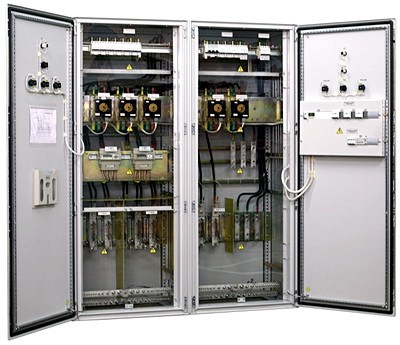
Emergency transfer of reserve
Backup input panel (ARS) equipped with special automatic devices, which switch power in the event of an emergency from the main source to a backup source of electricity. After eliminating the causes emergency mode The ATS reconnects the main power source to the line. It is used in many places: communal buildings, cottages, and production.
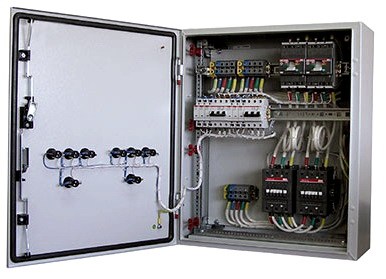
Floor electrical panel
Electrical panels on the floors of buildings (SB) serve to distribute the supply of electricity to apartments on the same floor.
The shield is usually divided into 3 compartments:
Distribution compartment (for consumer groups).
Accounting compartment (energy meters).
Subscriber compartment (intercom, radio, television, telephone).

Apartment board
Most often, such an apartment panel (ASB) is located in an apartment near the entrance, usually in the hallway. Its main purpose is energy metering electric current, distribution of electricity along apartment lines for power supply in different rooms and for various household devices. Automatic device modules located in the apartment panel protect the network from short circuits and overloads.
Apartment switchboards are divided by type of installation:
- Internal.
- Invoices.
According to the material of manufacture:
- Plastic.
- Metal.
Types of apartment electrical panels by purpose:
- Accounting (Shchku).
- Distribution (SchKR).
Lighting board
The lighting board is located in almost all existing buildings equipped with lighting devices for rare switching of lighting equipment using the board's automation. The lighting board protects outgoing lines from short circuits and current overloads.
Electrical lighting panels are divided into:
- Lighting panel with switch (OSCHV).
- Built-in (recessed) lighting panel with switch (УОШЧВ).
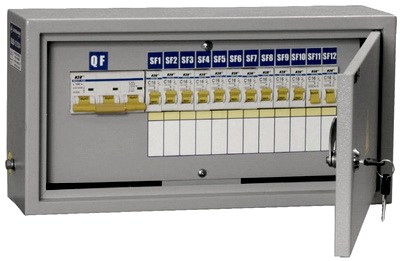
Control panel
This type of control panel (control panel) is designed to control automatic devices responsible for driving mechanisms: heating, alarms, ventilation, etc. Property values are adjusted manually.

Automation shield
This type of panel contains software controllers that monitor the functioning of drives of various mechanisms and systems.
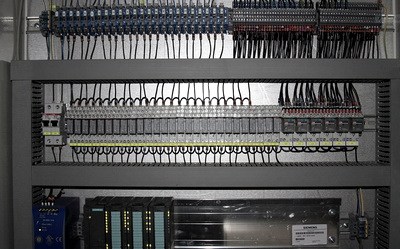
Uninterruptible supply board
This switchboard (SBP) provides electrical power to instruments and devices of control systems, computer equipment, medical equipment, and other systems that must be provided with constant nutrition electricity, and belonging to category 1 of electricity supply.
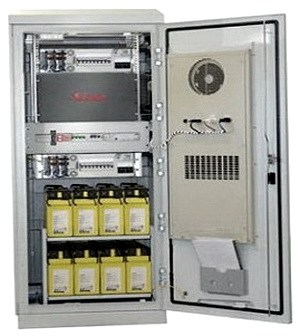
We have considered only some of the types used in electrical networks, but there are many more types.
Shield assembly
Installation work for the installation of electrical panels usually begins with the assembly operation of the main structure. There are switchboard devices in the form of assembled cases with mounting panels included. However, complete panels are more often used, and for them a design and assembly diagram are already developed.
First, the body is prepared for assembly, then the wall plugs of the body are removed. Electrical panels have different number sections of cable lines depending on their design. Therefore, you need to calculate in advance the location and number of holes for cables and wires, taking into account the possibility of making additional holes.
Next, installation rails, grounding bars, and mounting brackets are mounted. The components of the shield may be different. It depends on the type of distribution board. But the main thing in the assembly is preparation for final installation.
Installation
The installation method also depends on the type of shield design. The main difficulty is the design of the built-in electrical panel, since for it you need to hollow out the space necessary for its installation in the wall.
After hollowing out a niche in the wall, the shield is installed in place and secured with special brackets. In advance, before choosing the location of the switchboard, the possibility of access to the electrical wiring is calculated. After final installation, connect to power and consuming load.
An input cable with additional wires is installed inside the shield. The wires are aligned in one layer, taking into account the placement circuit breakers, their configuration. When the electrical wiring is connected to all devices of the panel, then the load of consumers and electrical installations are connected. Next, all lines are turned on one by one to check the functionality of the network.
Access restriction
When operating electrical panels, electrical safety rules must be observed. They must also be performed when installing the shield. When installed in public premises provide fencing and insulation of live parts. Access to the switchboard elements is protected by locked fences.
Price
Mounted types of panels, as well as overhead ones, are inexpensive; they can be purchased for around 700 rubles. These are panels for an apartment, without the possibility of expanding switching. But built-in structures remain popular, their cost is up to 1,500 rubles. They are in demand among modern consumers because, due to their built-in nature, they do not take up space in the room and are made with a modern design.
Conclusion
Distribution electrical energy at all times was one of the responsible operations. The efficiency of energy consumption and the stability of the power supply to consumers depend on it. Therefore, manufacturers are interested in producing reliable and functional devices, such as electrical panels.
The range of household devices is constantly growing, so distribution boards must also be modernized and expand their functional tasks. The popularity of models that are designed to arrange devices inside a switchboard for individual use is increasing.
Thus, using threaded connections, the installation panel of the switchboard can be equipped with almost any devices and modules.
People who often deal with electrical panels have noticed how different these panels can be. But most often, you can understand for what purpose a single copy serves if you know what the letter codes on the shield box mean. This article will discuss the most popular types of this equipment, as well as the goals and tasks that each individual type of electrical panel performs.
Floor board (SHE)
Almost the most common type of these devices, which any resident is familiar with communal apartment. Such shields are installed in almost all residential high-rise buildings, one for each floor. As you might guess, this device is responsible for supplying electricity to the apartment and protects all equipment on the floor from unexpected power surges.
Ordinary floor panel consists of three parts (chambers):
- Subscriber chamber containing protective fuses
- Metering chamber containing electricity meters
- A low-current chamber containing devices for servicing wired Internet, cable television, etc.
Apartment board (SchK)
Very often, apartment panels are used as a replacement for the floor analogue. The purpose of this shield is almost the same, but there are still a couple of exceptions. 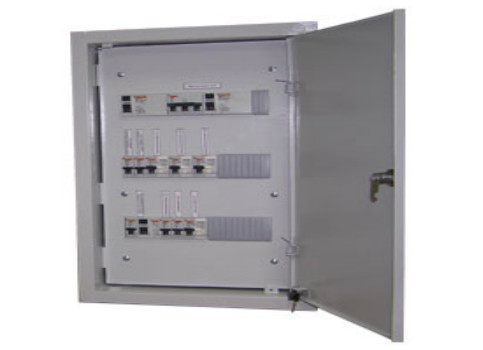
Firstly, through an apartment panel you can quickly and without extra effort cut off power to the apartment. You can also use it to turn off the electricity in any separate room(depending on which switches are in the panel).
Secondly, unlike floor panels, power meters are much less often installed in apartment panels. This little thing can cause some arguing (and sometimes serious litigation) between you and the company servicing your home.
Lighting board (SHB)
As the name suggests, this type of panel is designed to control lighting fixtures. Such devices are very often used in large non-residential buildings. An example is shopping centers, food hypermarkets, production workshops, office centers, etc. To simplify greatly, a lighting board is an analogue regular switch, and it is used in most cases for the same purposes. Just like in any other type of panel, fuses and power meters can be installed in the SCHO. The most common model in this category is a recessed lighting panel with a switch (UOSCHV) - a box built into the wall that can be easily disguised. 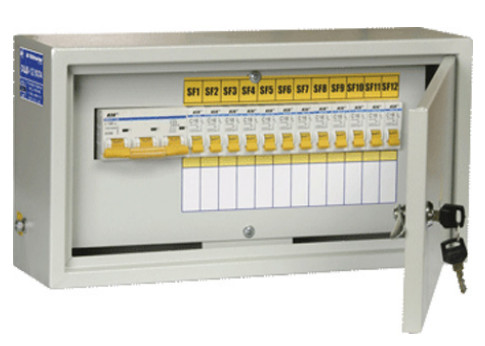
Control panel (control panel)
This type of electrical panels is most often installed in industrial enterprises. Unlike its younger brothers, the control panel has complex device and is used for a variety of purposes (control ventilation system, remote control electric motor). Depending on the purpose this type shields do not have a specific standard size. As a rule, this is a cabinet of impressive dimensions with many switches inside. 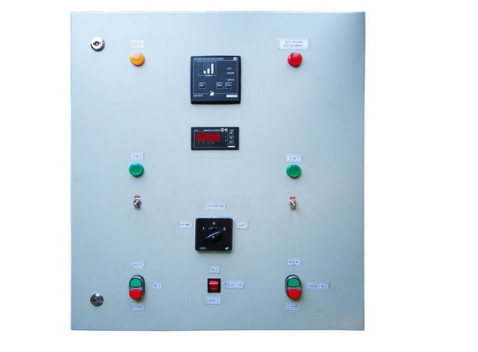
Automation panel (ASB)
Just like the control panel, this device is responsible for monitoring complex systems. But unlike it, it performs control automatically. 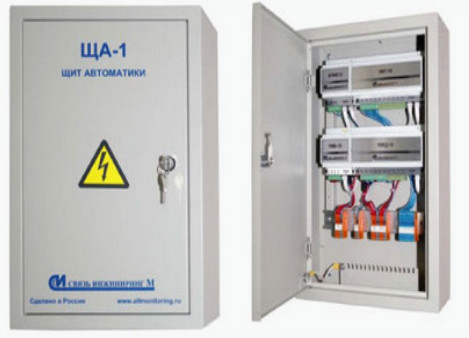
The automation panel is equipped with many sensors and controllers that monitor a variety of indicators. Based on these indicators, the device itself can turn off or turn on separate systems, or act according to a program pre-written for it.
The device is used for many different tasks. At the same time, for different cases they are used different models shields For example, a control valve for a steam boiler cannot be used to control a ventilation system.
Emergency (automatic) input of backup power (ABP)
An electrical panel that supplies electricity to the system when the main power supply is interrupted. This type of panel is the most common and is used in almost any electrical network. If electricity stops flowing into the system, the ATS switches it to a backup power source (another electricity supply channel or an emergency generator on which the system will operate until the problem is resolved). 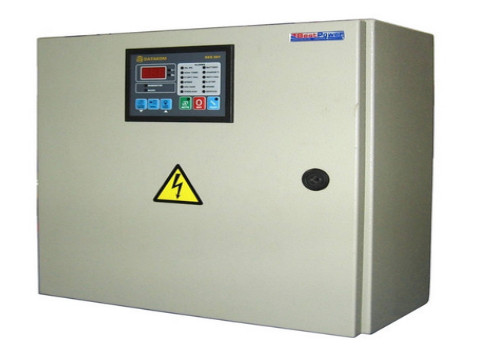
Most often, two subtypes of AVR shields are used:
- Priority shield, in which only one of the power channels can be the main one
- Non-priority shield, where the main one can be any of the power channels at different periods of time
Input switchgear (ASU panel)
Also a very popular type of electrical panels. As a rule, such equipment is installed in residential premises or production workshops. The ASU panel receives and distributes electricity across many smaller power channels. In an ordinary high-rise building, this switchboard stands on the ground floor or in the basement and distributes power to all floor switchboards. 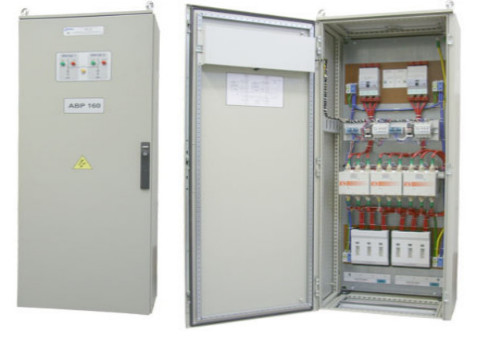
Main distribution board (MSB)
As a rule, this electrical panel is the most powerful at the facility, and, as a result, supplies electricity to the entire facility. If we consider the power transmission chain in any system, it will look something like this:
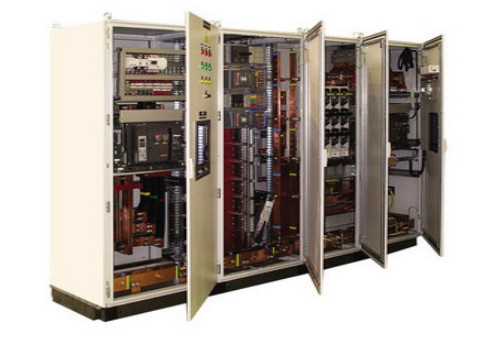
Video about Electrical panels
It goes through several stages, including its generation and transmission via special lines. The final stage before direct use is entering the electrical panel, where energy is managed and protection is provided during short circuits and overloads. Such devices are used in organizing the infrastructure of residential buildings, industrial and public premises. Depending on the purpose, an electrical distribution board of the appropriate type is installed. The market offers a wide selection of models of such equipment, which differ in both design parameters and internal structure.
Electrical panel functions
In its simplest form, the electrical panel serves to supply the network, which subsequently powers lighting fixtures, sockets and other household devices. As the range of power receivers expands, a more complex model may be required that will allow group distribution of energy to be implemented. These are already devices with wide switching capabilities that work with separate categories sockets, lamps and stationary electrical appliances. To understand what tasks a distribution center can perform, it is worth taking a broader look at the organization of energy supply. One module can serve not only an apartment, but the entire building. In this case, we can already say that the shield controls the energy supplied to individual devices that cover their service areas.
Varieties
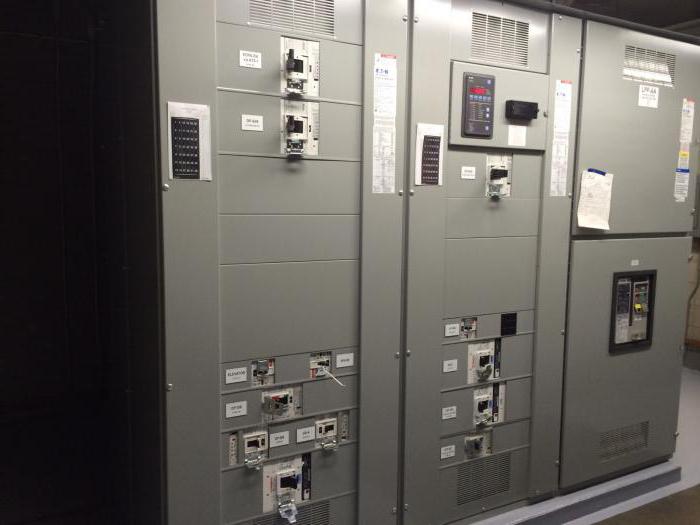
There are several classifications of electrical panels. First of all, you should decide on the intended use of the structure. As already noted, the equipment can supply energy based on an apartment or more consumers. Next, the installation method and material of manufacture are determined. Regarding the first criterion, traditional wall-mounted and suspended structures. During operation, a built-in electrical panel, which is integrated into a wall niche, is very convenient. However, installation of such a device is not always possible. If we talk about materials, manufacturers usually use a combination of plastic and metal. Despite the usual reliability characteristics of metal cases, modern composites also do not lag behind in strength and durability, so there is no significant difference between these models.
Composition of electrical distribution panel
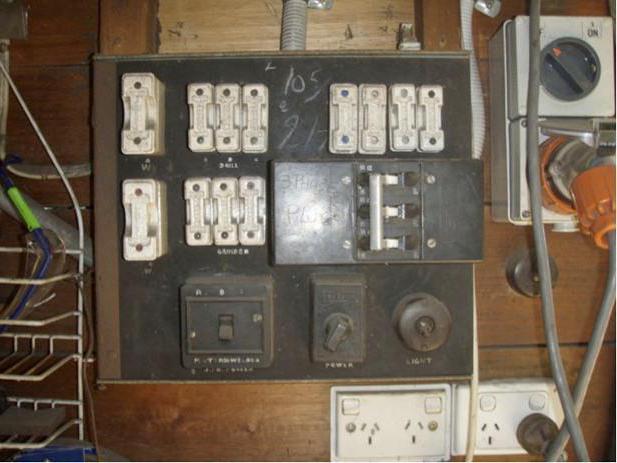
Typically, the shield houses equipment that serves for distribution and individual apartment or several consumption lines on landing. The standard set of devices that an electrical distribution board contains includes an RCD, an energy meter, switching devices with buses and terminals, fuses and other components to ensure network protection and energy resource management. As an addition, some installations may also be equipped with infrastructure for connecting and wiring cable television channels. Latest versions electrical panels are also provided with automatic devices that optimize energy consumption with a focus on different conditions operation, including the time of day.
Shield assembly
The installation of electrical panels begins with the assembly of the main structure. It should be noted that there are devices in the form of ready-made cases with complete mounting panels, but more often they use complete models for which they are designed individual scheme assemblies. So, first of all, the body is prepared, after which special plugs on the walls of the structure are removed. Individual electrical distribution boards assemblies may have different quantities cable entry areas, so you should initially consider the possibility of forming additional holes for wire entry. Then the DIN rails are screwed on, mounted on the walls with neutrals, and mounting brackets are connected. Of course, the filling may vary depending on specific requirements. The main thing at this stage is to prepare the box and its contents for final installation.

Installation
The method of mounting the housing is determined by the type of electrical panel design. It has already been noted that the most problematic is the built-in distribution cabinet, since for its integration it is necessary to create a special niche in the wall. Next, as in the case of conventional cases, the box is mounted on special brackets. Before choosing an installation location, it is important to calculate the accessibility of all wiring. When the installation of the electrical panel is completed, it can be connected to the source and consumers. An input cable with accompanying conductors is laid inside. It is advisable to level the wires into a single layer, taking into account the configuration of the placement of the machines to which you plan to connect. After connecting the wiring to the electrical panel infrastructure, it is necessary to connect consumers and electrical installation products. Then the load is applied to the individual lines one by one.
Restricting access to the panel
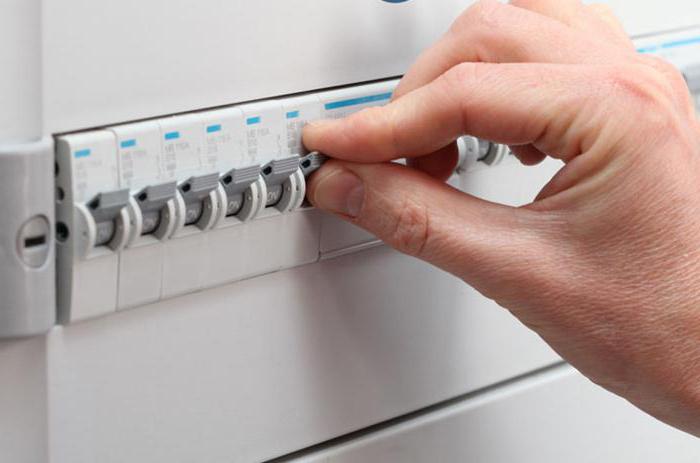
The operation of an electrical panel requires compliance with very strict safety measures. These standards must be taken into account at the stage of installation of the distribution cabinet. So, if installation is planned in a residential or public space, then special fencing and reliable insulation of current-carrying elements should be provided. Metal electrical distribution boards are usually made in this form, the maintenance of which is carried out by specialized personnel. At the same time, physical access to the contents of the cabinet is also blocked by barriers, which can only be overcome with the help of keys or a special tool.
Question of price
Small overhead and hanging structures can be purchased for 500-700 rubles. These are models that are suitable for servicing one apartment and do not imply expansion of switching capabilities. The most popular is still the built-in electrical distribution board, the price of which is 1-1.5 thousand rubles. As a rule, these are metal boxes, the configuration of which is focused on the needs of the modern electricity consumer.
Conclusion
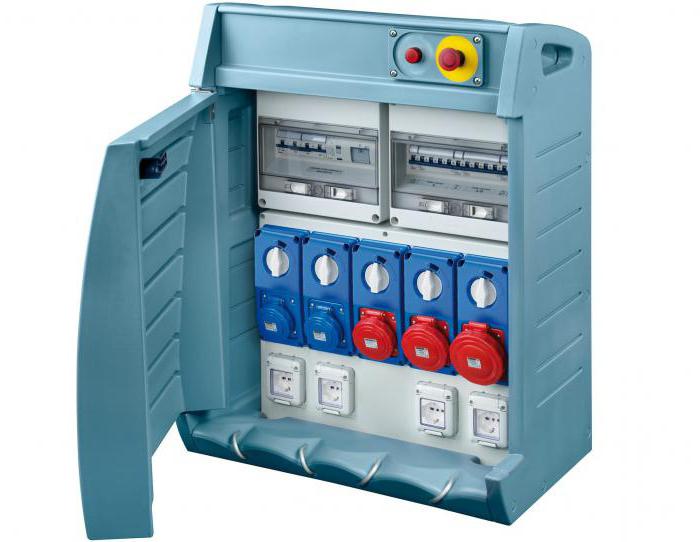
Energy distribution is a critical operation on which both the stability of the power supply to the end receivers and the efficiency of cost optimization depend. For this reason, manufacturers strive to make such devices as reliable and at the same time functional as possible. Increasing spectrum household appliances and devices also determines the expansion of the list of tasks that the electrical distribution board must perform in modern design. Against the backdrop of this trend, models designed for individual layout of internal elements are gaining popularity. For example, using the mounting panel of such a cabinet, you can provide any electrical equipment. One such housing allows you to simultaneously accommodate modular parts and individual system components.
Surely, more than once we have seen abbreviations like: SHE, VRU, OSCH, etc. on billboards. all these intricate letters hide the essence of the devices, which is known to those who directly service them, and sometimes, even those who service the switchboards become so accustomed to the abbreviation that they do not think about their purposes. So let's start looking at types and types of electrical panels from the main shield, the “king” of the shields.
The main switchboard is designed for input of power power lines, electricity metering and distribution of power lines for objects. The device also serves to protect against short circuits and overloads in power supply networks. If we consider the hierarchy of electrical switchboards, then the main switchboard is at the very top level. The main distribution board is most often located on the territory of a transformer substation (TS), boiler houses, and production facilities.
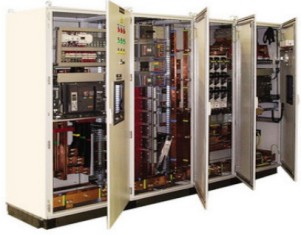
The device, which includes a complex of electrical automation and structures, is used to receive the input power cable, distribute power lines for the switchboard, switchboard, shield, ASU, electricity metering, and protect lines from overloads and short circuits. Installed at the entrance to residential and public buildings, as well as in industrial premises (workshops).
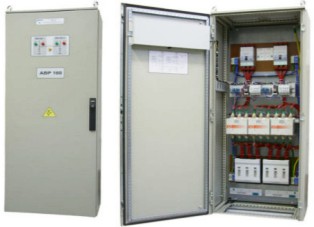
The AVR panel is equipped with special automation. The automatic transfer switch switches power from the main source to an additional one (generator) in the event of a failure of the main electricity supplier. After eliminating the accident, the ATS will transfer from the generator to the main line and after a few minutes the generator will be stopped. Used in industrial, commercial, communal buildings, as well as in cottages.
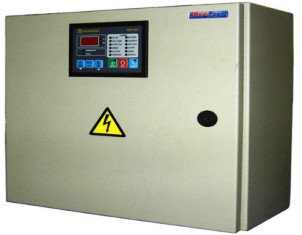
Floor board (SHE).
It is used in residential and administrative buildings to distribute electricity to 1–6 apartments. The shield is divided mainly into three compartments:
Distribution compartment (modular automation for groups of electrical circuits).
Metering compartment (electric meters).
Subscriber compartment (telephone, intercom, TV, radio, etc.).
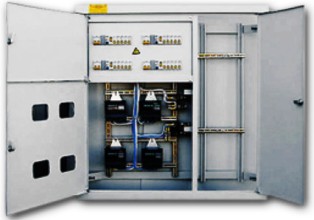
Apartment panel (AS).
As a rule, it is located at the entrance to the apartment in the hallway area. The main purpose of the control panel is electricity metering, distribution of group power lines in the apartment, modular automation protects the electrical circuit from overloads and short circuits. ShchK come in overhead and internal installation, metal and plastic versions.
The apartment panel is divided into:
Shchku - apartment accounting panel.
ShchKR – apartment distribution board.

Lighting board (OSH).
Lighting boards are installed in administrative, retail and office premises for infrequent operational switching on and off of automation. ShchO protects outgoing lines from overloads and short circuits.
Lighting boards are divided into:
OSHV (lighting panel with switch).
UOSCHV (recessed lighting panel with switch).

